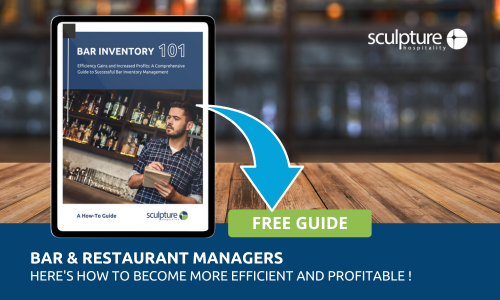Understanding and controlling your pour cost is pivotal to the success of your bar... and believe us - we know that bar management isn't easy.
It’s more than just a number; it’s a barometer of your business’s health, reflecting factors like inventory management, staff training, and overall operational efficiency. But what actually is pour cost and why is it important?
In this blog, we'll walk you through the intricacies of pour cost calculation, its importance, and strategies to optimize it for maximum profitability.
So, What is Pour Cost?
Pour cost is the percentage of the selling price of a drink sold in your bar compared to the amount the raw ingredients cost your business. For example, if a drink sells for $10 and the cost of the liquor is $2, the pour cost is 20%.
Why is Calculating Pour Cost Important For Your Bar?
There are a whole host of reasons why calculating pour cost is crucial for your business, here are a few of the key ones.
- Boost Your Profits: Tracking pour cost helps you understand your company’s profitability, and make necessary adjustments to pricing or purchasing strategies to boost profit margins.
- Gain Control of Your Inventory: By monitoring pour cost, you can identify potential areas where you are losing inventory to things such as overpouring or waste.
- Build a Better Menu: Pour cost analysis helps you determine the profitability of different drinks and make informed decisions about your menu offerings.
- Price Your Menu Wisely: Pour cost is crucial for setting competitive yet profitable drink prices.
- Benchmark Against Your Peers: Comparing your pour cost to industry standards helps you identify areas for improvement.
Now to the Important Stuff… How to Calculate Pour Cost
Calculating pour cost involves a few simple steps:
- Determine the Cost of the Liquor: This includes the purchase price of the bottle and any additional costs like taxes or shipping.
- Calculate the Number of Servings Per Bottle: This varies depending on the liquor type and the standard pour size for your bar.
- Calculate the Cost Per Serving: Divide the cost of the bottle by the number of servings per bottle.
- Determine the Selling Price of the Drink: This is the price you charge customers for the drink.
- Calculate the Pour Cost Percentage: Divide the cost per serving by the selling price and multiply by 100.
For example:
- A bottle of vodka costs $20 and contains 25 servings.
- The cost per serving is $20 / 25 = $0.80
- The drink sells for $10.
- The pour cost percentage is ($0.80 / $10) * 100 = 8%
Still With Us? Here’s a Real World Calculation
Let's say you have a popular vodka martini that costs $12. Your pour cost analysis shows that the vodka itself accounts for $1.50 of that cost. This means your pour cost for the vodka in that martini is 12.5%.
By tracking pour costs for all your drinks, you can identify which ones are the most profitable and adjust your menu accordingly.
OK Hang On For a Few More Minutes, There’s Another Critical Metric to Keep in Mind - Variance
When it comes to monitoring your bar’s inventory, variance is an important metric.
Variance is simple. It’s a percentage that measures the difference between what is poured by your bartenders and what is rang into your point-of-sale (POS) system. It’s calculated with this formulae:
Variance % = Usage Difference ÷ Expected Usage x 100
A positive variance means you're spending less on liquor than anticipated, which is generally good. However, it could also indicate problems like under-pouring or inaccurate inventory counts.
A negative variance, on the other hand, is a red flag. It means you're spending more on liquor than expected
High variance is typically caused by shrinkage, which includes factors such as spillage, over-pouring, theft, or evaporation.
So, why is this important? Understanding the difference between actual pour cost and ideal pour cost is crucial for managing your bar's profitability.
- Actual pour cost is the real-world cost of your liquor, calculated based on your actual sales and inventory usage.
- Ideal pour cost is the theoretical cost of your liquor based on your standard recipes and pour sizes.
By comparing your actual pour cost to your ideal pour cost, you can identify areas where you're losing money and implement strategies to reduce variance.
For more information here, read our blog What is the Difference Between Actual and Ideal Pour Cost?
Improve Inventory Control and Visibility With Sculpture Hospitality
Sculpture Hospitality offers advanced inventory management solutions and in-person inventory management experts, specifically designed for bars and restaurants. We can help you:
- Track Inventory Levels Accurately: Maintain real-time visibility into your stock, preventing stockouts and overstocking.
- Monitor Pour Costs: We can provide detailed reports on pour costs, allowing you to identify trends and anomalies quickly.
- Reduce Waste: By optimizing inventory levels and minimizing spoilage, you can significantly reduce your costs.
- Improve Profitability: With better control over your inventory, you can increase your profitability by optimizing your drink pricing and purchasing strategies.
- And so much more!
Sculpture Hospitality can help you take control of your bar inventory and improve your bottom line. Contact us today to learn more about our solutions.












